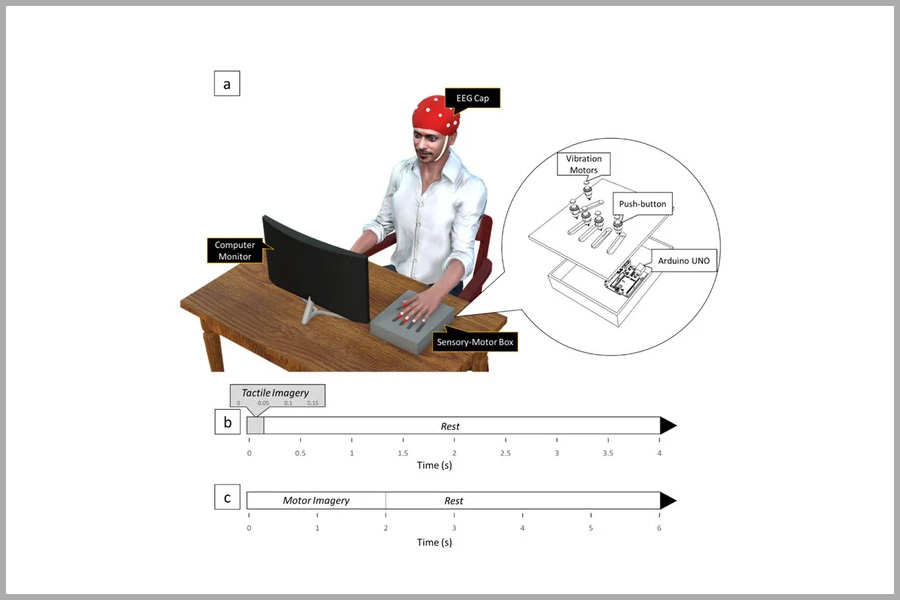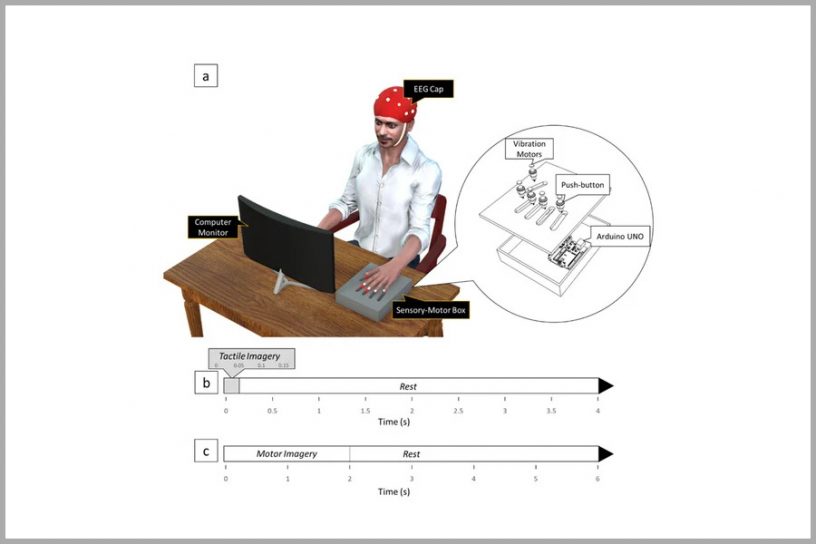
The results of this study suggest that compound tactile imagery can be a viable alternative to motor imagery for brain–computer interface classification.
Authors
Deepa Madathil, Associate Professor, Jindal Institute of Behavioural Sciences, O.P. Jindal Global University, Haryana, India.
Kishor Lakshminarayanan, Neuro-Rehabilitation Lab, Department of Sensors and Biomedical Engineering, School of Electronics Engineering, Vellore Institute of Technology, Vellore 632014, Tamil Nadu, India.
Rakshit Shah, Department of Chemical and Biomedical Engineering, Cleveland State University, Cleveland, OH 44115, USA.
Sohail R. Daulat, Department of Physiology, University of Arizona College of Medicine, Tucson, AZ 85724, USA.
Viashen Moodley, Arizona Center for Hand to Shoulder Surgery, Phoenix, AZ 85004, USA.
Yifei Yao, Soft Tissue Biomechanics Laboratory, Med-X Research Institute, School of Biomedical Engineering, Shanghai Jiao Tong University, Shanghai 200030, China.
Puja Sengupta, Neuro-Rehabilitation Lab, Department of Sensors and Biomedical Engineering, School of Electronics Engineering, Vellore Institute of Technology, Vellore 632014, Tamil Nadu, India.
Vadivelan Ramu, Neuro-Rehabilitation Lab, Department of Sensors and Biomedical Engineering, School of Electronics Engineering, Vellore Institute of Technology, Vellore 632014, Tamil Nadu, India.
Summary
Objective: The purpose of this study was to investigate the cortical activity and digit classification performance during tactile imagery (TI) of a vibratory stimulus at the index, middle, and thumb digits within the left hand in healthy individuals. Furthermore, the cortical activities and classification performance of the compound TI were compared with similar compound motor imagery (MI) with the same digits as TI in the same subjects.
Methods: Twelve healthy right-handed adults with no history of upper limb injury, musculoskeletal condition, or neurological disorder participated in the study. The study evaluated the event-related desynchronization (ERD) response and brain–computer interface (BCI) classification performance on discriminating between the digits in the left-hand during the imagery of vibrotactile stimuli to either the index, middle, or thumb finger pads for TI and while performing a motor activity with the same digits for MI. A supervised machine learning technique was applied to discriminate between the digits within the same given limb for both imagery conditions.
Results: Both TI and MI exhibited similar patterns of ERD in the alpha and beta bands at the index, middle, and thumb digits within the left hand. While TI had significantly lower ERD for all three digits in both bands, the classification performance of TI-based BCI (77.74 ± 6.98%) was found to be similar to the MI-based BCI (78.36 ± 5.38%).
Conclusions: The results of this study suggest that compound tactile imagery can be a viable alternative to MI for BCI classification. The study contributes to the growing body of evidence supporting the use of TI in BCI applications, and future research can build on this work to explore the potential of TI-based BCI for motor rehabilitation and the control of external devices.
Published in: Brain Sciences
To read the full article, please click here.


